Ex-Fusion will accelerate the development of technologies necessary for the practical application of laser fusion energy.
In addition, we will contribute to the development of technologies not only in the energy field but also in various industries by utilizing the most advanced laser control technologies and knowledge obtained in the process of developing commercial laser fusion reactor,
We will contribute to technological development not only in the energy field but also in various industrial fields.
Issue : Simultaneously meet growing energy demand and decarbonize
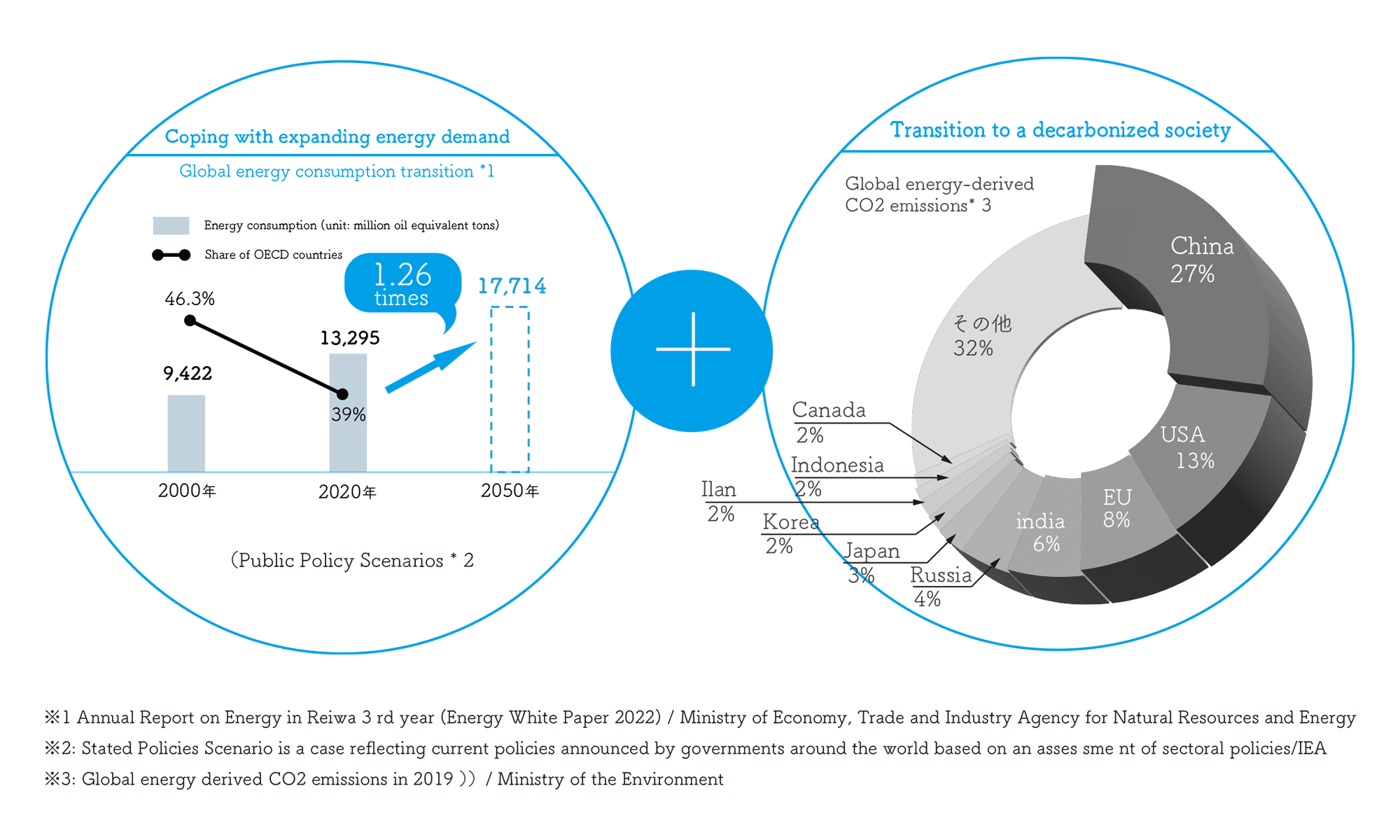
Energy consumption is expected to increase with global economic growth, mainly in emerging economies, and by 2050 is expected to increase by 1.26 times from 2020 levels globally.
Energy-related global CO2 emissions will amount to 36.6 billion tons, and identifying sustainable non-carbon emitting energy is an urgent issue for the world as we aim to keep the rising global temperature under 1.5 degrees.
Solution 1 : Fusion Energy without Dependence on Fossil Fuels
What is fusion energy?
Fusion energy is an innovative power generation system that can supply large amounts of electricity in a stable, sustainable, and safe manner using abundant resources from seawater.
- Only helium and neutrons are produced by the nuclear fusion reaction, and no greenhouse gases are generated in the fusion process.
- Since it is not affected by weather conditions and other environmental factors, it can provide a more stable supply of large amounts of power when compared to other clean energy sources such as solar power and wind power.

CO2 emissions from fusion energy
0t
- Only helium and neutrons are produced by the fusion reaction, and no greenhouse gases are produced
- More stable supply of large amounts of electricity than other clean energy sources such as solar and wind power because it is not affected by environmental factors such as weather conditions.
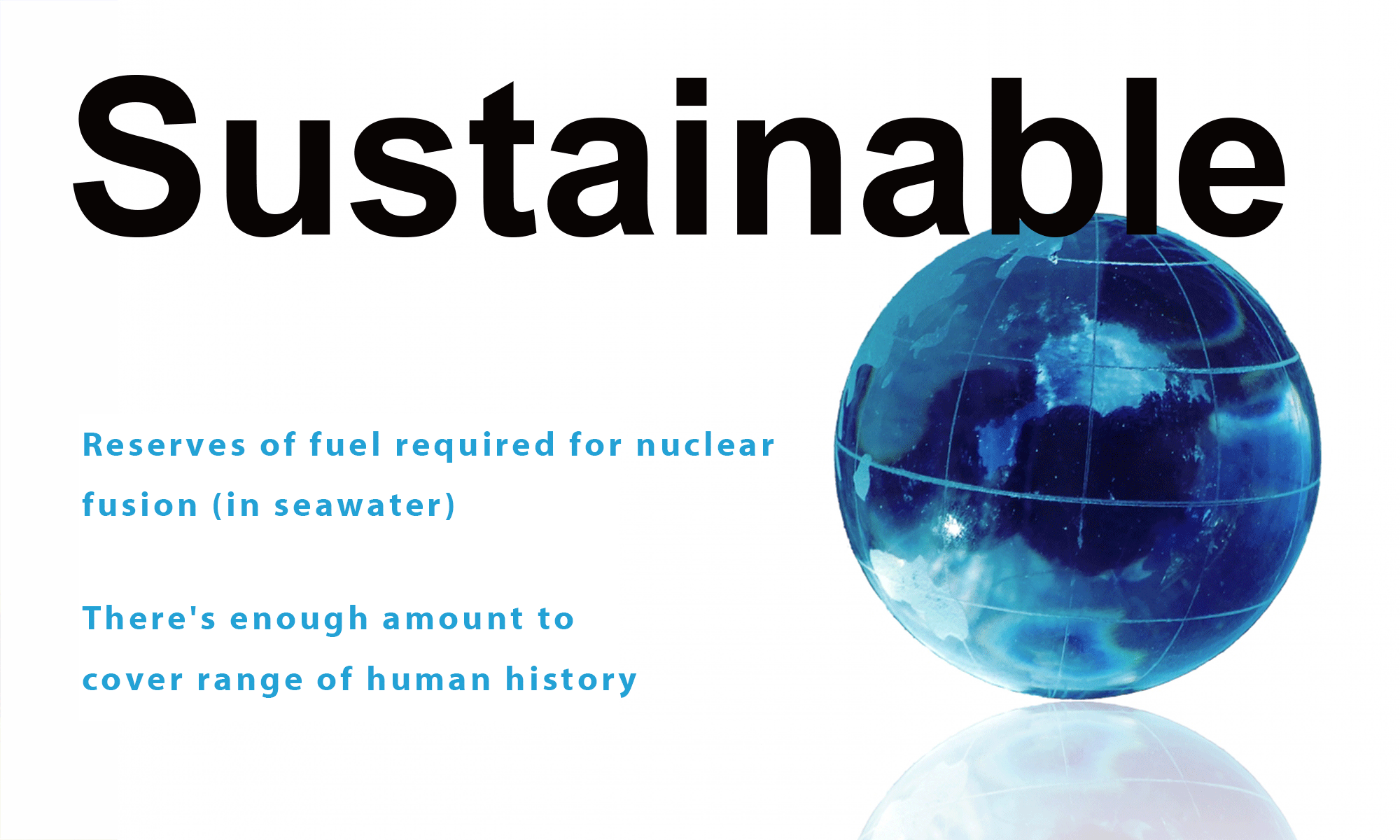
Fuel for fusion (deuterium and tritium) can be extracted inexhaustibly from seawater
- Deuterium: can be extracted from seawater
- Tritium: produced by bombarding lithium extracted from seawater with neutrons generated as a result of fusion reactions
Fusion contributes to energy independence and self-sufficiency because resources can be secured regardless of country or region

Safe method because the energy is produced using the exact opposite principle of nuclear power

Solution 2 : “Laser fusion method” can cope with load fluctuations
Laser fusion method
The fusion energy that EX-Fusion aims to commercialize is called “laser fusion method”. Compared to the “magnetic confinement method”, our solution that utilizes laser technology has the advantage of being able to respond to power load fluctuations and is being considered as an alternative to peak power sources while serving baseload power as well.
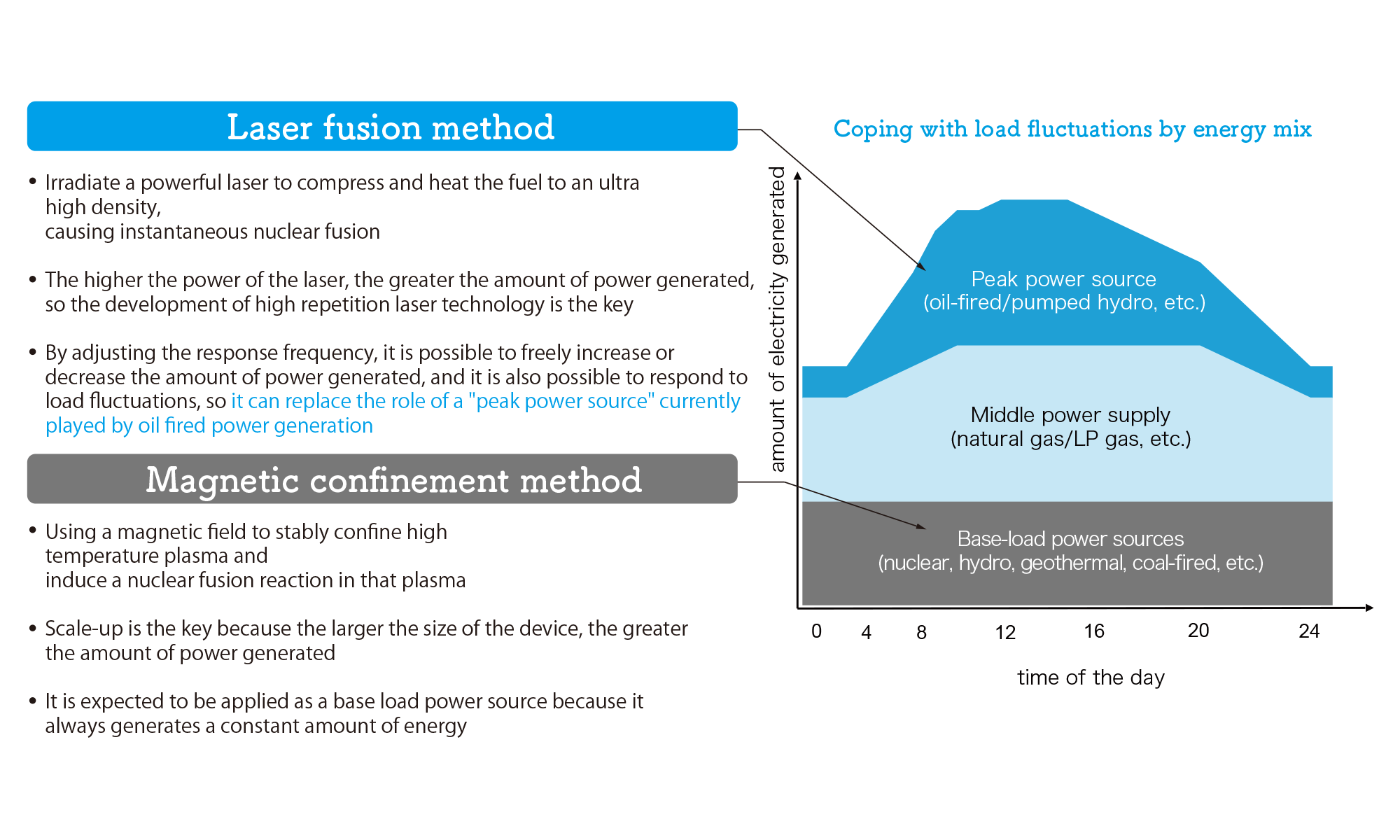
Impact: Goal of reducing 14% of the world’s CO2 emissions by 2050 with fusion power
By 2050, we aim to reduce CO2 emissions by approximately 4.9 billion tons, or about 14% of global emissions, through the commercialization of fusion energy and the application of industrial decarbonization solutions based on laser technology.
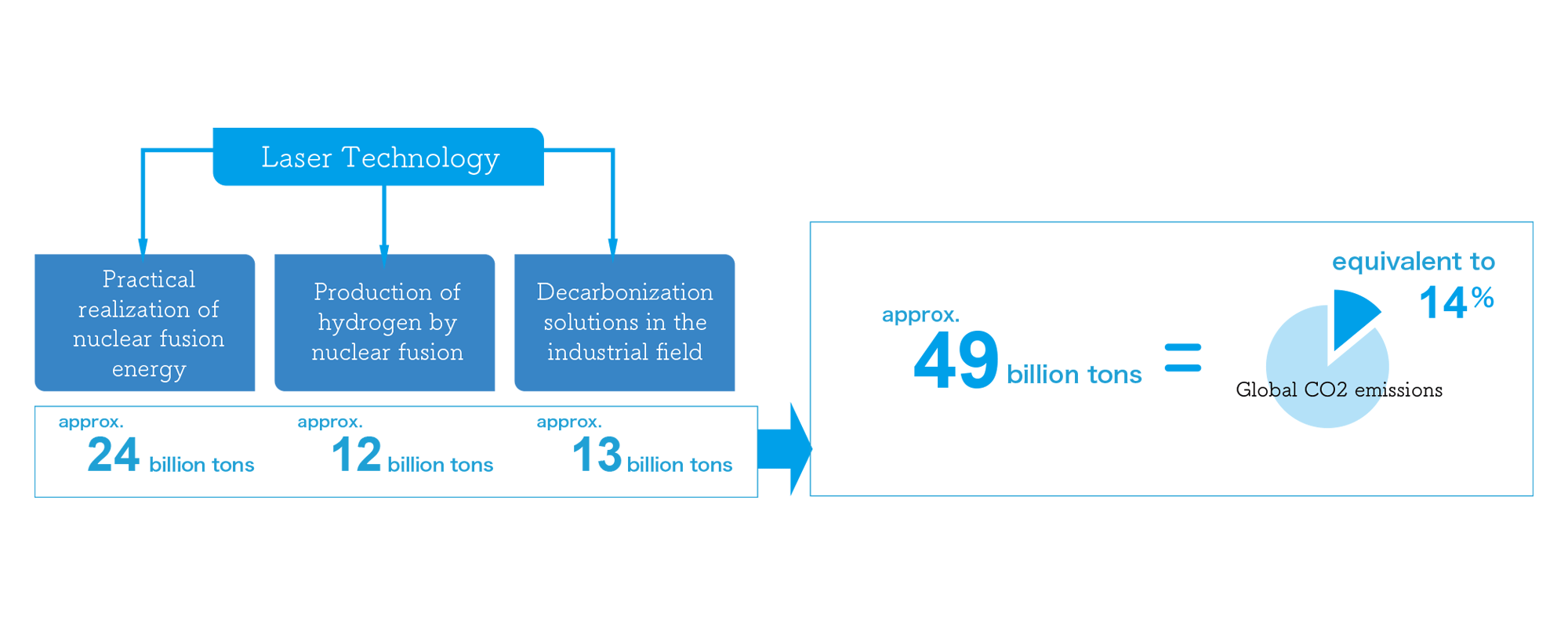
Impact story: The story of a decarbonized society
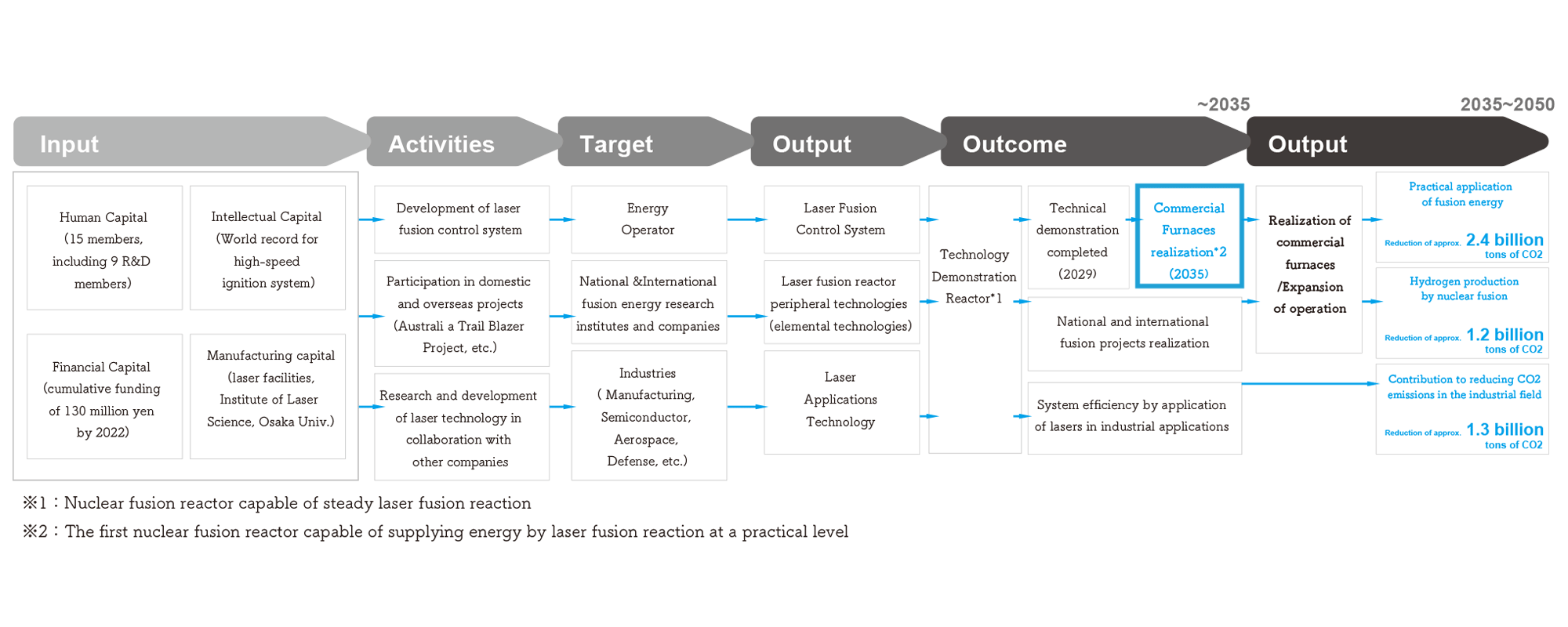
Challenge : Challenges to commercialization
EX-Fusion is committed to solving the challenges associated with commercialization of fusion energy through a full range of R&D activities to bring about an “energy revolution”.
Maximizing fusion output beyond the energy input
In December 2022, the first successful fusion reaction that produces more energy than input (net energy gain) occurred at the Lawrence Livermore National Laboratory marking a breakthrough in fusion energy development.
- On the other hand, to realize a commercial reactor, it is necessary to develop technology for continuous ignition to generate energy sustainably.
- In addition, it is necessary to maximize Q-value considering power and cost perspectives
Development of Laws and Regulations Based on the Characteristics of Fusion Power
- Currently, fusion power generation is subject to the same reactor regulation laws as nuclear power generation, and must meet strict standards.
- In reality, fusion power is a reaction that occurs based on the exact opposite principle compared to nuclear power and is highly safe; therefore, it is necessary to establish appropriate laws and regulations for fusion.
- In the U.K. and the U.S., fusion has been classified as a byproduct of nuclear reactions and is regulated and governed under a different category of safety measures that are different from the rules set forth for nuclear fission reactions.
Technical issues related to scaling-up and mass production
- Maintaining accuracy when scaling up the device, responding to the risk of failure, ensuring production capacity and suppliers for mass production of modules, and standardization to support such widespread adoption of the technology.
Securing tritium as fuel
- Tritium can be self-sufficient after the first fusion reaction, but a large amount of tritium is required for the first reaction.
- Various measures are being considered, such as producing tritium in conjunction with other systems such as BWR and other power production methods.